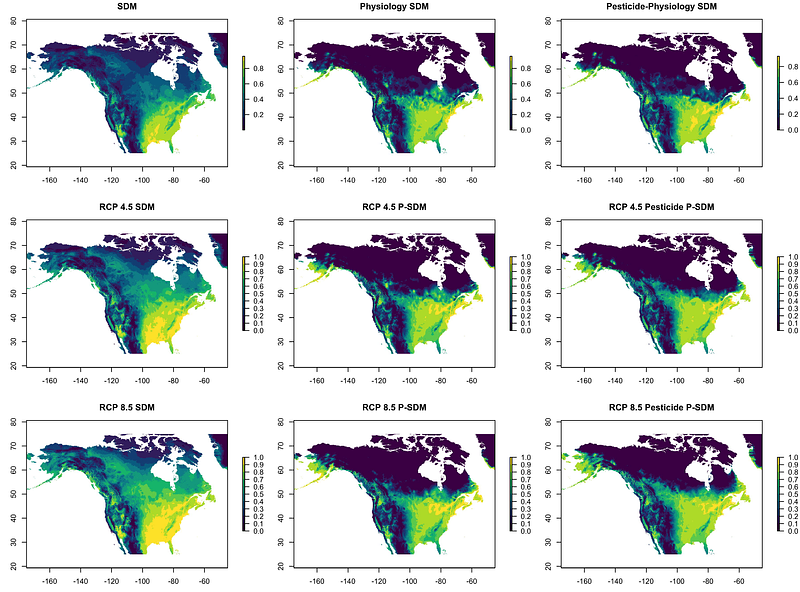Sub-lethal pesticide exposure facilitates the potential northward range shifts of ticks by increasing cold tolerance and overwintering survival

Sub-lethal pesticide exposure facilitates the potential northward range shifts of ticks by increasing cold tolerance and overwintering survival
Oyen, K. J.; Barya, T.; Davies, B.; Didion, E. M.; Benoit, J. B.
AbstractPesticides are a primary tool for the control of harmful insects or other organisms throughout the world. Although most organisms are likely to encounter pesticides in the environment, little is known about the effects of these chemicals on the physiology of off-target species. We measured the impact of sublethal pesticide exposure on the cold tolerance of two common tick species. We predicted that sublethal pesticide exposure would make ticks more sensitive to extreme temperatures. In contrast, we found that exposure to sublethal pesticides had the opposite effect, increasing survival at low temperatures. Sublethal pesticide exposure decreased the LT50 (lethal temperature at which 50% mortality is observed) of adult and nymphal D. variabilis from -16C to -19C and improved overwintering survival. Evaluation of previously available RNA-seq data between rapid cold hardening and pesticide exposure indicated potential transcriptional shifts associated with cross-tolerance between cold and pesticide exposure. To investigate the population-level impacts of this physiological shift in cold tolerance, we developed a novel approach for incorporating physiological survival data into spatially explicit species distribution models (SDMs). Using this approach, we demonstrate that pesticide-induced increases in cold tolerance may permit faster northward range shifts of D. variabilis. We also demonstrate that incorporating physiological data into SDMs moderates the estimated impacts of environmental change and may provide more accurate predictions of species responses to changing environments. Although our study is limited to ticks, other studies have shown the effects of pesticides on thermal tolerance traits in diverse species. The extensive use of pesticides may drive complex interactions between species and their environments, leading to altered thermal tolerance traits and establishment in new habitats.